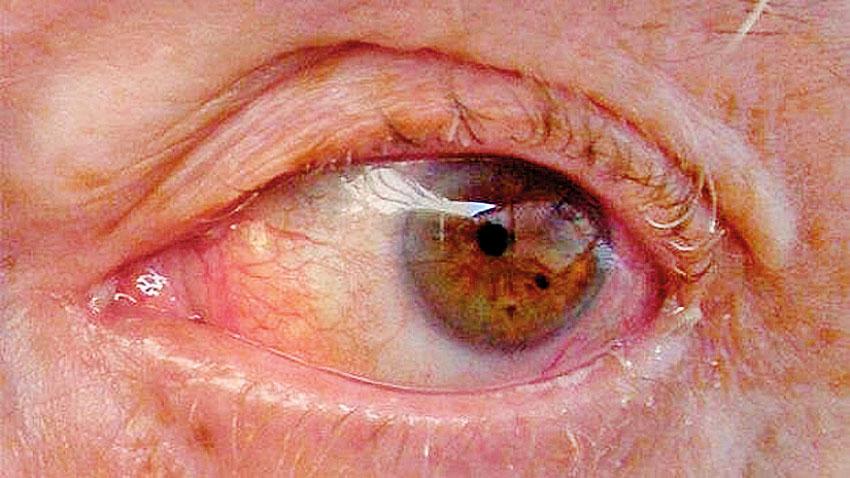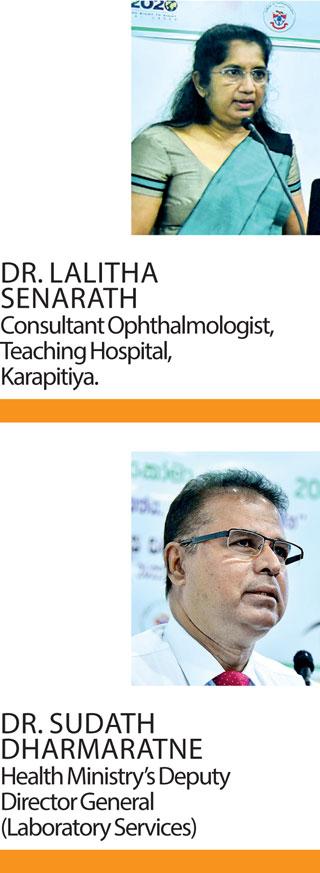Reply To:
Name - Reply Comment

 Glaucoma is the second leading cause of blindness and the most common cause of irreversible blindness globally. It silently robs your eyesight even before you feel it. Therefore, through early diagnosis, people in high risk groups will be able to control the condition in order to minimise its impact on their lives. In most instances people with glaucoma go into depression as they feel they will eventually turn blind. But with early diagnosis and medical treatments, glaucoma can be controlled and people can lead a normal life.
Glaucoma is the second leading cause of blindness and the most common cause of irreversible blindness globally. It silently robs your eyesight even before you feel it. Therefore, through early diagnosis, people in high risk groups will be able to control the condition in order to minimise its impact on their lives. In most instances people with glaucoma go into depression as they feel they will eventually turn blind. But with early diagnosis and medical treatments, glaucoma can be controlled and people can lead a normal life.
Understanding glaucoma 
“Glaucoma is a group of eye diseases that cause progressive damage to the optic nerve of the eye which carries visual information to the brain,” explained Dr. Lalitha Senarath, Consultant Ophthalmologist, Teaching Hospital, Karapitiya. “The main reason for this damage is the impact of increased eye pressure. Eye pressure is maintained by Aqueous, a watery fluid produced by a structure called a ‘ciliary body’ located in the posterior chamber of the eye. The fluid passes through the pupil to the anterior part of the eye and leaves the eye by draining through sieve-like structure in the angle of the eye between the cornea and the iris to the blood stream. Usually there’s a balance between the aqueous production and drainage. But if it is produced too much or if the drainage pathway is block, eye pressure will increase.”
Four main types of glaucoma include :
Prevalence and future estimates
A 2013 census revealed that 3.54 million people between the ages of 40-50 are at risk of being diagnosed with glaucoma while 64.3 million people were already diagnosed with the condition. “But with the growth in the elderly population this number can reach 0.1 billion by 2040. Once diagnosed with glaucoma, it’s difficult to do something on your own. People will have to depend on someone else and eventually they become depressed. Therefore those above 40 are at a higher risk of developing glaucoma but if detected early it can be prevented,” Dr. Senarath added.
Risk factors
Blindness prevails in around 2% of the Sri Lankan population as per the Vision 2020 blindness survey. A person diagnosed with glaucoma at the age of 40 is likely to turn blind by 60 if they don’t resort to necessary treatments. While anybody could be diagnosed with glaucoma, several risk factors have been identified:
She further said that the danger with chronic glaucoma is that your eye may seem perfectly normal until the condition worsens. “Initially you will experience blurring or loss of peripheral visual field that gradually advances toward the center of the eye. People usually have tunnel vision at the end stage and if you are at your forties and find it difficult to focus on nearby objects, then you need to get your eyes checked for glaucoma. This condition is not preventable but glaucoma can be controlled without leading to blindness. However, treatments need to be continued throughout life.”

Treatments
Most treatments aim to reduce the pressure on the eye. Eye tests and treatments are available tertiary care hospitals, general hospitals and base hospitals in Sri Lanka. Private hospitals and certain consultation Centres too have facilities to conduct eye tests.
·Visual Field Tests are the most commonly used basic test for glaucoma.
·Optical Coherence Tomography (OCT) these are non-invasive computer based 2D and 3D imaging techniques that use light waves to take cross sectional pictures of your retina in order to get a detailed view of the spread of glaucoma. This is available in some tertiary care hospitals including the National Eye Hospital and Teaching Hospital, Kandy.
“80% of the cases can be controlled by medical treatments. In a worst case scenario, the person will have to undergo a surgery. Laser treatments can also be done. Doctors will prescribe one or two eye drops and according to the extent of the condition you will be advised to get your eye pressure checked at regular intervals. Certain treatments are expensive and people need to be educated on using them mindfully. Another issue is that people with glaucoma tend to undergo depression as they feel that they would turn blind. But with proper treatments they can lead a normal life even with glaucoma,” she added.
Improving health literacy
Addressing the media, Health Ministry’s Deputy Director General (Laboratory Services) Dr. Sudath Dharmaratne said that it is crucial to improve the knowledge of healthcare workers in order to detect glaucoma at an early stage. “Most elderly people have a higher risk of getting glaucoma. Sri Lankans have limited health literacy and this is why we need to initiate health education programmes. The visual field gradually reduces due to glaucoma and we meet patients once the condition has worsened. This is one challenge we have in preventing the disease. If we don’t educate the public and provide facilities to diagnose the condition early, it would be difficult to treat them.”
“We initially need to conduct a survey to detect people with glaucoma and then look at treatment programmes. Plans are underway to conduct training programmes through the National Eye Hospital and College of Ophthalmologists and take necessary steps to prevent the disease. The College has requested the Health Ministry to improve skills of healthcare workers to detect glaucoma and provide facilities to hospitals in order to test more people for glaucoma.”
Pix by Kithsiri De Mel